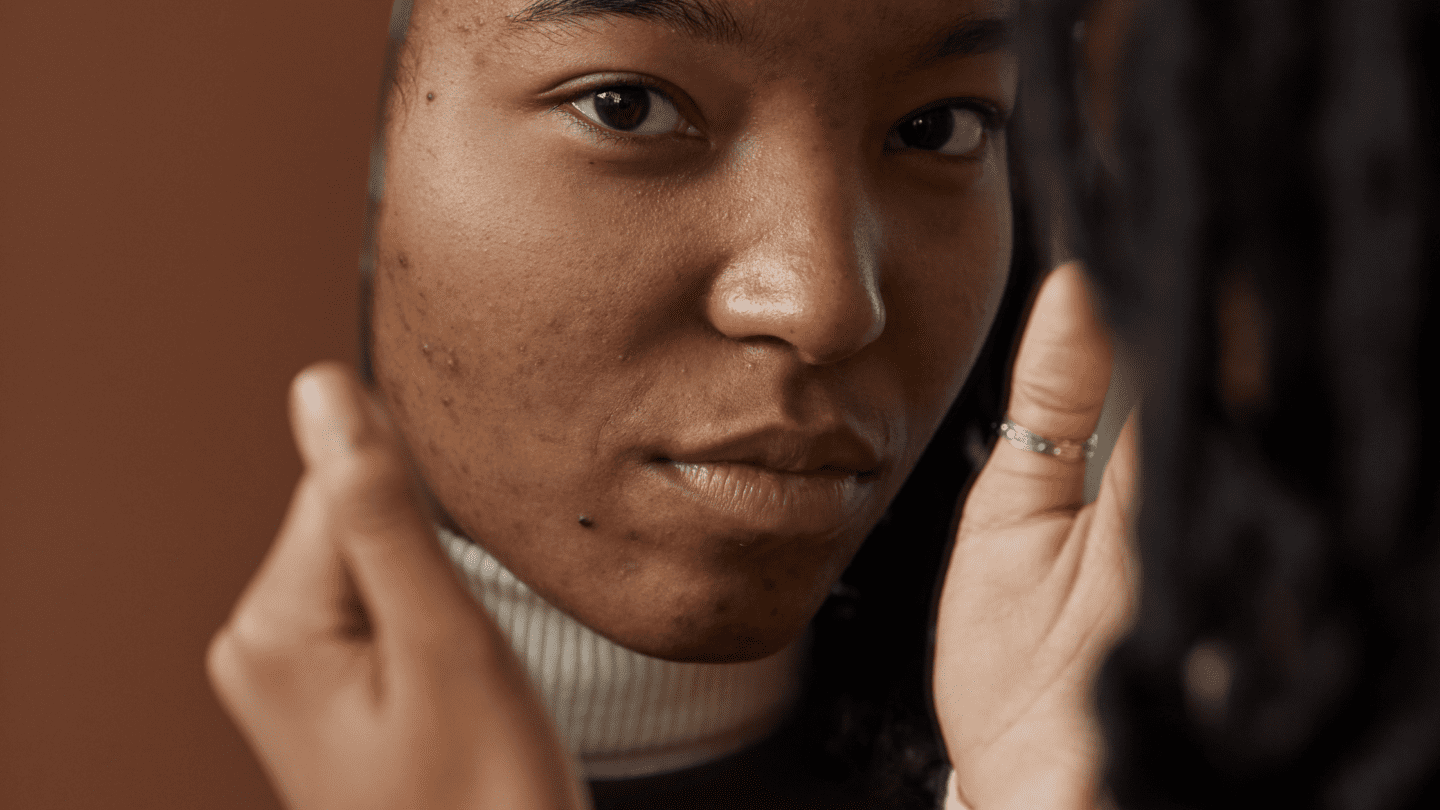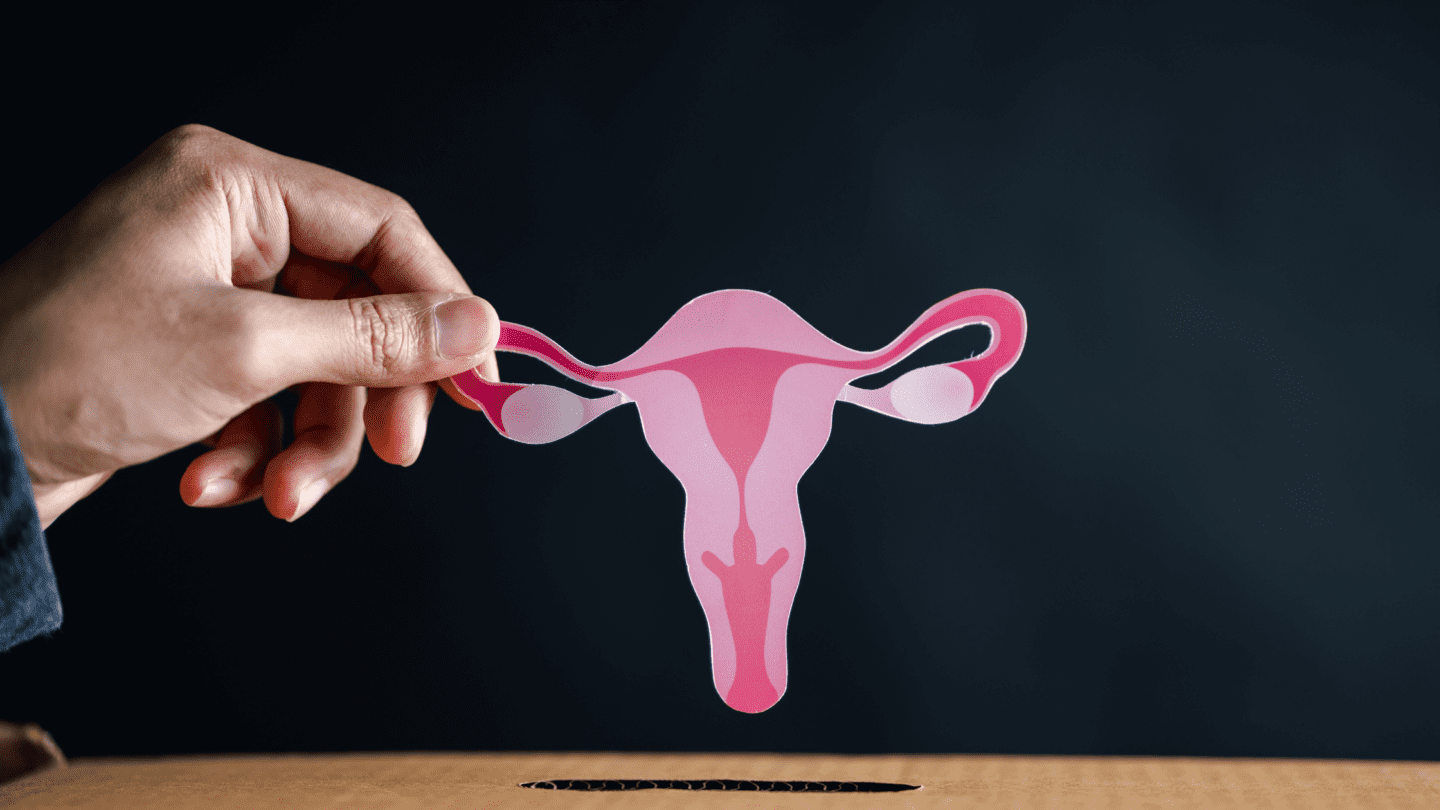Hormonal acne, sometimes called adult acne, can be even more annoying than the acne you might have had as a teenager. Cysts, lesions, and pimples that keep coming back are truly the absolute worst. If you do have hormonal acne, you’re far from alone. Studies estimate that anywhere from 12-41% of adult women have acne,1 and the American Academy of Dermatology estimates around 50 million Americans have the skin condition.2
Whether you’re a teenager or an adult, you can probably blame hormones for causing your acne. While they show up at different times in your life, and may not look exactly the same, both kinds of acne share the same underlying causes. Hormones, specifically sex hormones called s, lead your pores to get clogged and inflamed, creating red, painful marks that dot your skin.3
The full story behind hormonal acne is surprisingly complex, and researchers still don’t totally understand it.4 Treatments for hormonal acne, however, are reasonably straightforward. Lifestyle factors like diet or smoking may play a role, and topical treatments can be a first line of defense. Hormonal treatments for acne like the birth control pill are another excellent option. There are a few birth control pills approved by the FDA specifically for treating acne, and they address the root cause.5
Read on for more about what causes hormonal acne, what we know about the science behind it so far, and some tips for what to do about it.
What does hormonal acne look like?
Hormonal acne shares some similarities with adolescent acne: angry red bumps under the skin, open or closed pimples, and other blemishes. You might find hormonal acne shows up in slightly different places, however. Some studies find that adults tend to have more acne around their jaws and mouths, and less on foreheads and higher on the face, though the scientific literature on this isn’t conclusive.5 Adult hormonal acne also tends to consist of more cysts, or painful bumps under the skin, and fewer blackheads and whiteheads.5-6
Hormonal acne is more common in adult women than adult men, likely because of differences in levels.3
Like what you’re reading? Get the latest straight to your inbox 💌
What causes hormonal acne?
Acne is just inflammation caused by skin pores clogging with oil and bacteria. Your body reacts by producing pimples and cysts as it tries to get rid of the clogs. The “hormonal” in hormonal acne comes from s, a group of sex hormones, that cause changes that make clogged pores more likely.1
Androgens, including , are often called “male” sex hormones. Yet everyone has them, and they play essential roles in the menstrual cycle. Because levels fluctuate during your menstrual cycle, it can lead to regular hormonal acne flare-ups.7
The “hormonal” in hormonal acne comes from s, a group of sex hormones, that cause changes that make clogged pores more likely.
Higher levels tell your body to make more sebum, or oil, which can clog pores, triggering bacterial growth and inflammation that causes acne. s can also worsen inflammation and might also affect your skin microbiome in ways that make acne worse. However, both of these factors need further research to solidify their links to acne.4
Our genetics influence how much s our bodies produce, so your plays a role in determining whether you get hormonal acne.3 Conditions like polycystic ovary syndrome (PCOS) and congenital adrenal hyperplasia (CAH) can also lead to acne because they affect levels in the body.4
Is adyn right for you? Take the quiz.
How to treat hormonal acne
There are a few different ways to treat adult acne, ranging from simple lifestyle changes and topical treatments to prescriptions that address the root of the problem: hormones. Different approaches work better for different people, depending on both your preferences and your body, and you might need to try a combination of things for your acne treatment to be effective.5
Treatments for hormonal acne include:5
- Topical treatments like retinoids, dapsone, and azelaic acid are often used as first-line treatments for hormonal acne. Your dermatologist can prescribe them.
- Lifestyle changes to your diet, sleep habits, exercise, and more can help control acne, though they’re often not entirely effective by themselves. In particular, diets high in sugar and other high-glycemic index foods can make acne worse.
- Hormonal can provide a more long-lasting treatment for hormonal acne. By decreasing levels, helps disrupt the source of hormonal acne.8 But, only some kinds of are effective for treating acne. You may need an option with both and s, and be careful to use later-generation s like desogestrel, norgestimate, and drospirenone — earlier s can actually increase activity. There are several kinds of approved by the FDA as acne treatments: Estrostep Fe, Ortho Tri-Cyclen, Yaz, and Beyaz.8-9
When to see a doctor about your hormonal acne
Hormonal acne sometimes clears up on its own, though it often comes back. For some people, hormonal acne is just an occasional annoyance, while for others, it’s a real problem. Severe cases can leave permanent scars.
If your acne isn’t clearing up on its own, or feels really bad (or even if you’re just annoyed by it), see a dermatologist who can help you with an action plan. Treatment might include a variety of things like lifestyle changes, topical creams, or . If you’re on , consider asking them whether your option is approved for treating acne — you might be able to switch to one that does double duty.
Hormonal can help with a variety of things in addition to acne, like PCOS, irregular periods, and heavy bleeding, so it might be worth exploring for a variety of reasons.
The Birth Control Test can help you choose a option that prevents or even treats hormonal acne. Get started today.
-
- Rocha, M. A., & Bagatin, E. (2018). Adult-onset acne: prevalence, impact, and management challenges. Clinical, cosmetic and investigational dermatology, 11, 59–69. https://doi.org/10.2147/CCID.S137794
- American Academy of Dermatology (n.d.) Skin Conditions by the Numbers. https://www.aad.org/media/stats-numbers
- Bagatin, E., Freitas, T. H. P., Rivitti-Machado, M. C., Machado, M. C. R., Ribeiro, B. M., Nunes, S., & Rocha, M. A. D. D. (2019). Adult female acne: a guide to clinical practice. Anais brasileiros de dermatologia, 94(1), 62–75. https://doi.org/10.1590/abd1806-4841.20198203
- Hu, T., Wei, Z., Ju, Q., & Chen, W. (2021). Sex hormones and acne: State of the art. Journal der Deutschen Dermatologischen Gesellschaft = Journal of the German Society of Dermatology : JDDG, 19(4), 509–515. https://doi.org/10.1111/ddg.14426. Full text: https://sci-hub.scrongyao.com/10.1111/ddg.14426
- Dreno, B., Bagatin, E., Blume-Peytavi, U., Rocha, M., & Gollnick, H. (2018). Female type of adult acne: Physiological and psychological considerations and management. Journal der Deutschen Dermatologischen Gesellschaft = Journal of the German Society of Dermatology : JDDG, 16(10), 1185–1194. https://doi.org/10.1111/ddg.13664
- Khunger, N., & Kumar, C. (2012). A clinico-epidemiological study of adult acne: is it different from adolescent acne?. Indian journal of dermatology, venereology and leprology, 78(3), 335–341. https://doi.org/10.4103/0378-6323.95450
- Krüger, T. H. C., Leeners, B., Tronci, E., Mancini, T., Ille, F., Egli, M., Engler, H., Röblitz, S., Frieling, H., Sinke, C., & Jahn, K. (2023). The androgen system across the menstrual cycle: Hormonal, (epi-)genetic and psychometric alterations. Physiology & behavior, 259, 114034. https://doi.org/10.1016/j.physbeh.2022.114034
- Tyler, K. H., & Zirwas, M. J. (2013). Contraception and the dermatologist. Journal of the American Academy of Dermatology, 68(6), 1022–1029. https://doi.org/10.1016/j.jaad.2012.11.018
- FDA. (2/2012). Highlights of Prescribing Information: Beyaz. https://www.accessdata.fda.gov/drugsatfda_docs/label/2012/022532s001lbl.pdf








